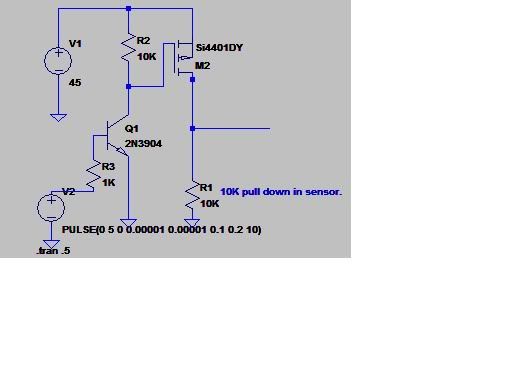I have a 24V - 45V supply that I need to connect to a sensor pin but I need to be able to turn it on or off via a PIC output. The max current will be 100mA. I have considered a logic level nfet, but what about a pfet? Any other suggestions?
The idea is: 24V ---> fet ---> sensor input









Bookmarks